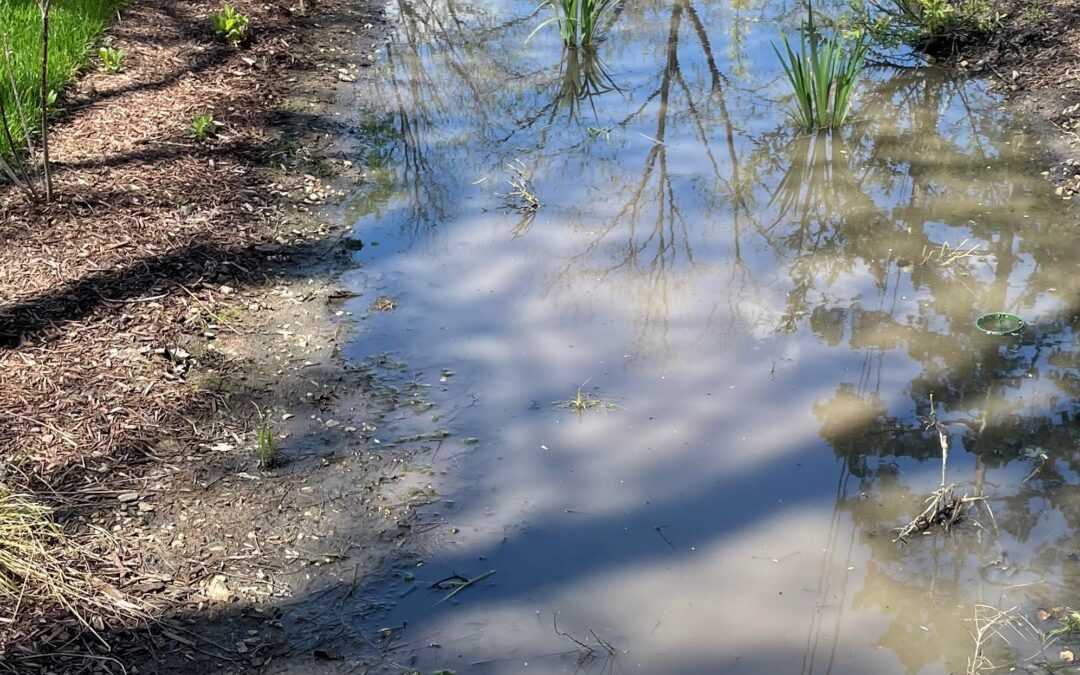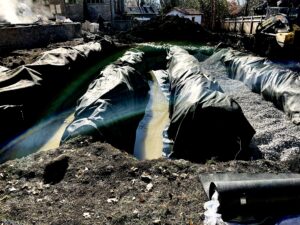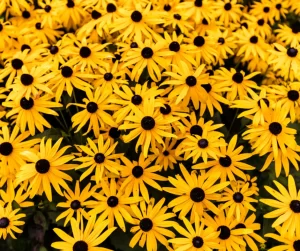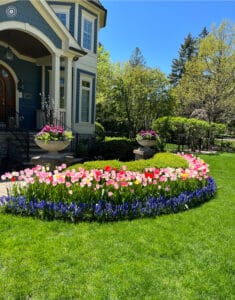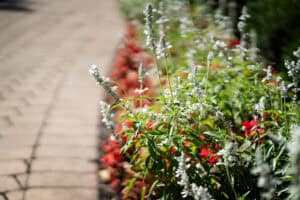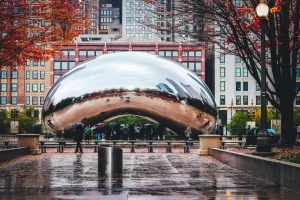Was there a heavy rainstorm that resulted in standing water on your property and now you are looking for some creative drainage options? Spring rain brings a flood (see what I did there) of calls into the office seeking help to mitigate standing water.
Whether your yard is too squishy for the kids to play in, your neighbor rerouted a sump pump to face your foundation, or the whole neighborhood pitches to your yard, there are options. In this article, we will discuss 8 effective ways backyard drainage solutions that will eliminate excessive moisture.
8 Effective Backyard Drainage Solutions
1. Rain Barrels
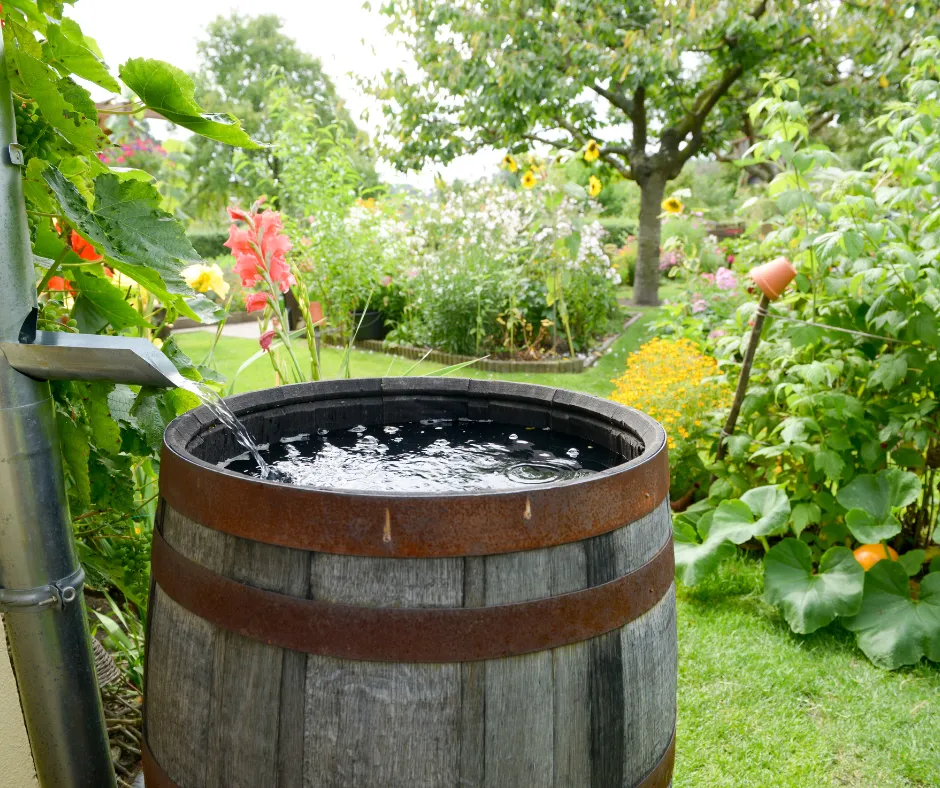 First on our list of backyard drainage solutions is to add a rain barrel to your landscape. You can start to collect rainwater from your roof in rain barrels.
First on our list of backyard drainage solutions is to add a rain barrel to your landscape. You can start to collect rainwater from your roof in rain barrels.
Rain barrels can be a great way to harvest water for your family and your landscape. If you add filters to the rain barrel, it can be a great backup of fresh water!
More than likely, this isn’t going to solve the issue, but it will harvest 50+ gallons of water from the property to be reallocated to your vegetable garden or annual planters.
2. Bury Your Downspouts
A sump pump drainage idea is the bury your downspouts. This is a really common way to redirect water from the foundation and keep it from overwhelming your sump pump.
This option also allows us to control the roof runoff and redirect it to a point within the property where it can continue along a predetermined path toward a retention pond, city sewer, rain garden, or dry well. Most cities have ordinances regulating where these subgrade downspout pipes can emerge, so check your local building codes.
3. Install A Rain Garden
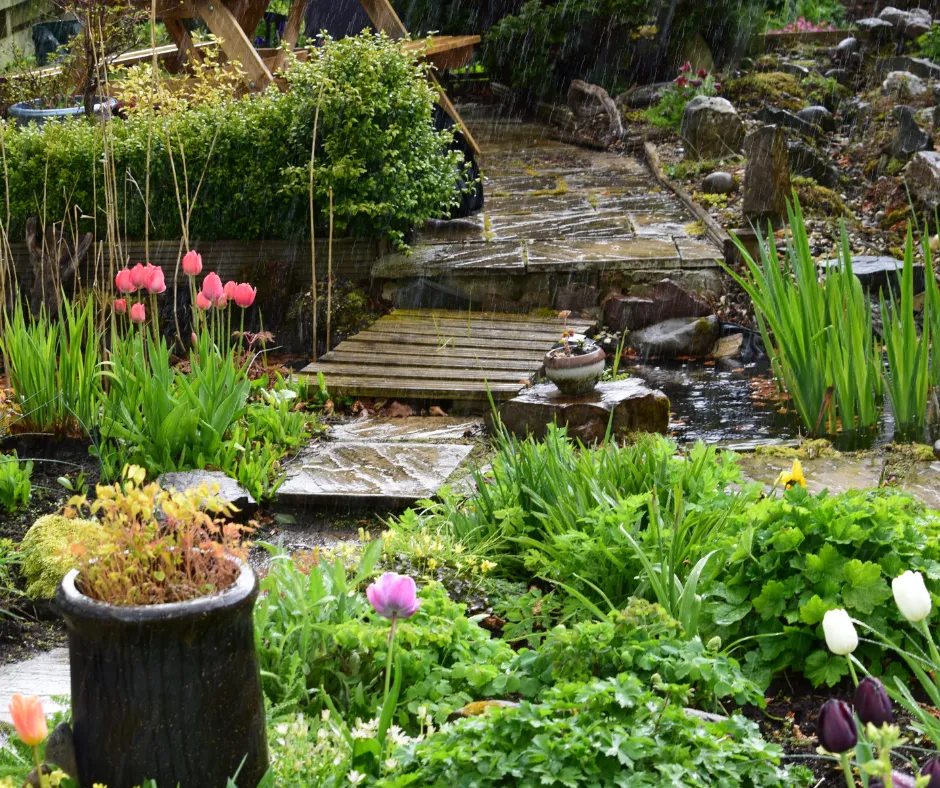 Another great idea for backyard drainage solutions is to install a rain garden. You can embrace a low spot on your property or grade your yard to redirect rainwater to a localized rain garden.
Another great idea for backyard drainage solutions is to install a rain garden. You can embrace a low spot on your property or grade your yard to redirect rainwater to a localized rain garden.
Again, this may not solve the problem, but combined with other efforts, a rain garden will allow for a diverse planting opportunity and encourage water to trickle into our reservoirs preventing unnecessary runoff into our sewer systems. Rain gardens are perfect for a Chicago landscape if you have an existing low spot on your property and water relocation is not cost-effective.
4. Create A Swale
Most towns require a swale between properties when permitting new construction homes. This allows cities to manage water movement and direct water toward retention ponds or city drains. If you live in an older home, built without modern grading plans many times we can redirect water away from the trouble area with a simple swale.
5. French Drain
Next on our list of backyard drainage solutions is a French drain. This is essentially a swale where collected water rests in the swale and can quickly trickle below the surface through a permeable gravel system. This method keeps water on your property and replenishes our aquafers.
6. Install A Dry Well
Now we are starting to get involved here. This requires a massive property excavation with a large quantity of soil extracted and hauled off-site. A city-approved container or a system of open cell blocks with perforated pipe is set below grade and installed with a permeable gravel system to collect roof and/or property runoff underground. This is a great way to minimize the impact on your neighbors and feed our area aquifers.
7. Dry Creek Bed
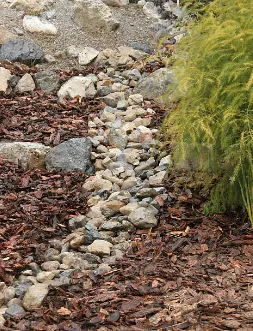 Another idea on our list of backyard drainage solutions is to create a dry creek bed. This is a way to redirect water with a swale and/or French drain covered in decorative stone. By using varying rock styles and sizes and strategically placing plants along a meandering dry creek, we can manage water during high run-off periods and add a unique feature to the landscape.
Another idea on our list of backyard drainage solutions is to create a dry creek bed. This is a way to redirect water with a swale and/or French drain covered in decorative stone. By using varying rock styles and sizes and strategically placing plants along a meandering dry creek, we can manage water during high run-off periods and add a unique feature to the landscape.
8. Connect to the City Sewer System
Many towns have cost-sharing programs that help offset the cost of water mitigation if the water issue is impacting multiple properties. Connecting personal downspouts and sump pumps into the city system requires cooperation and approval from the city and should only be done by approved vendors like American Gardens.
End Card
Our spring and summer rainfalls are becoming increasingly extreme. Extraordinary amounts of rain over shorter windows of time can overwhelm properties and sewer systems that were not designed to manage such intense downpours.
You do have options, so if you know that April showers bring water sorrows, then reach out, and let’s see if we can create a solution that best fits your yard!



